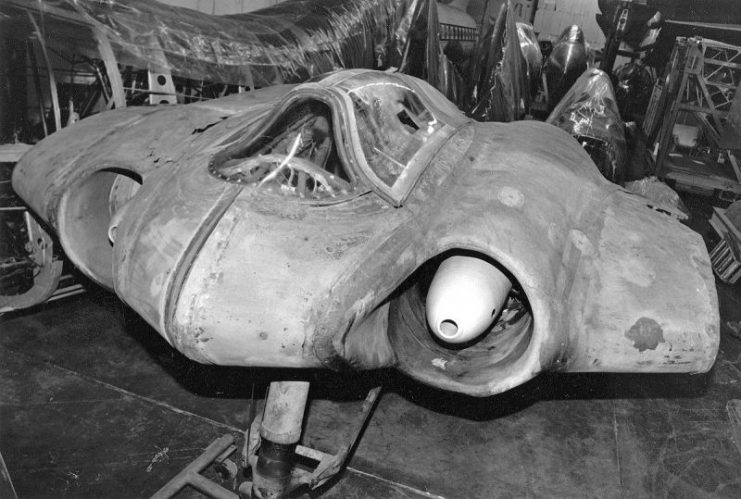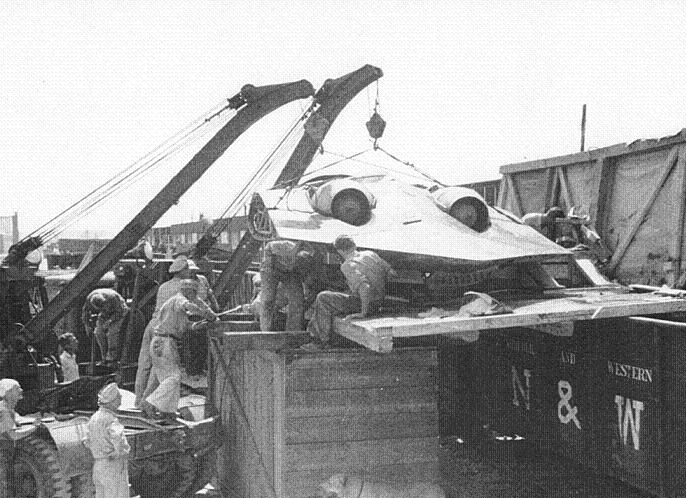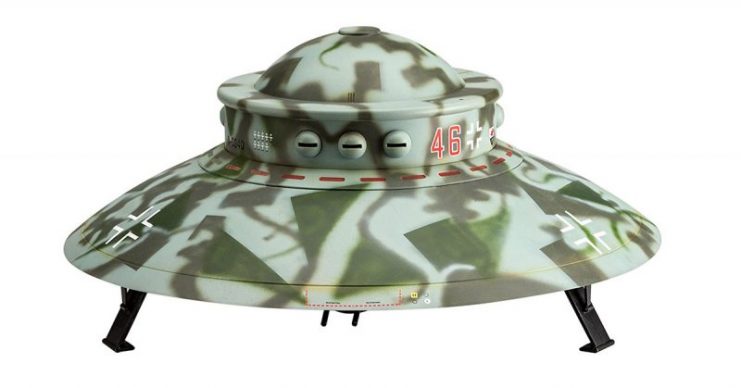German toy and game manufacturer Revell has removed from store shelves its model of a “Flying Saucer Haunebu II,” which is described as a war machine from the Nazi era.
A Revell spokesperson said that the criticism directed at the company was “absolutely justified,” and that the company would no longer manufacture or distribute the item.
The German Children’s Protection Association (DKSB) and the Military History Museum (MHM) complained that the product provided an inaccurate account of history.
The description of the product called it the “first object in the world capable of flying in space.” It listed the top speed of the craft as 3,750 mph and stated that the Nazis ceased production after the test phase because of the end of World War II.

The model includes Nazi emblems and is described as a vehicle from the Third Reich, even though no such machine has ever existed.
According to Jens Wehner of the MHM, the technology of the time was incapable of producing such an aircraft.
He further stated that presenting this model without mentioning that it never existed in real life risks giving people the false belief that Third Reich technology was far more advanced than it actually was. In doing so, it gives pro-Nazi supporters an opportunity to cause people to doubt what is factually known about the Nazi party and their capabilities.

Revell agreed with the criticism and said that the vehicle is, in fact, legendary and that there is no proof that one ever existed. They issued a statement apologizing for not indicating this in their product description and then went on to state that they did not condone the glorification of war or of the Nazi era.
Revell is performing an internal review to determine how the product was approved and brought to market. Most products take a year to reach store shelves. Product managers are typically responsible for the development of a new product although input from fans is sometimes considered in creating a new product.
While it is known that the Nazis were frantically working to develop new wartime technologies at the end of WWII, the Haunebu has never been definitively proven to exist. Conspiracy theorists point to grainy photographs of UFO-like objects as evidence that the Third Reich had succeeded in developing the saucer-shaped vehicles.

They believe that the Nazis developed the Haunebu II in 1942 as a larger version of the previous Haunebu I. It allegedly held a crew of nine and could remain in the air for up to 55 hours while achieving airspeeds of between 3,750 mph and 13,000 mph. An even larger Haunebu II Do-Stra followed. The Haunebu II vehicles were supposedly test flown from 1943 to 1944, making 106 test flights between the two models. The end of the war prevented the regime from ever producing more than test prototypes of the design.
The craft was allegedly powered by an advanced electro-magnetic-gravitic engine utilizing a Van de Graf generator and a Marconi vortex dynamo to affect gravity and reduce mass. A new type of weapon, the KSK gun, was supposed to be utilized in the new vehicle but theorists claim that it destabilized the craft in flight and so more common armaments were said to have been used instead.
The Haunebu took its name from the Hauneburg region in which it began development before being moved to the Vril Arado Brandenburg aircraft testing facility.
Some theorists claim that the Nazis buried the prototypes in Antarctica and that they are still there, waiting to be discovered.
No concrete evidence of these vehicles has ever been brought to light so historians dismiss claims of such fantastical technologies as myths and legends.
